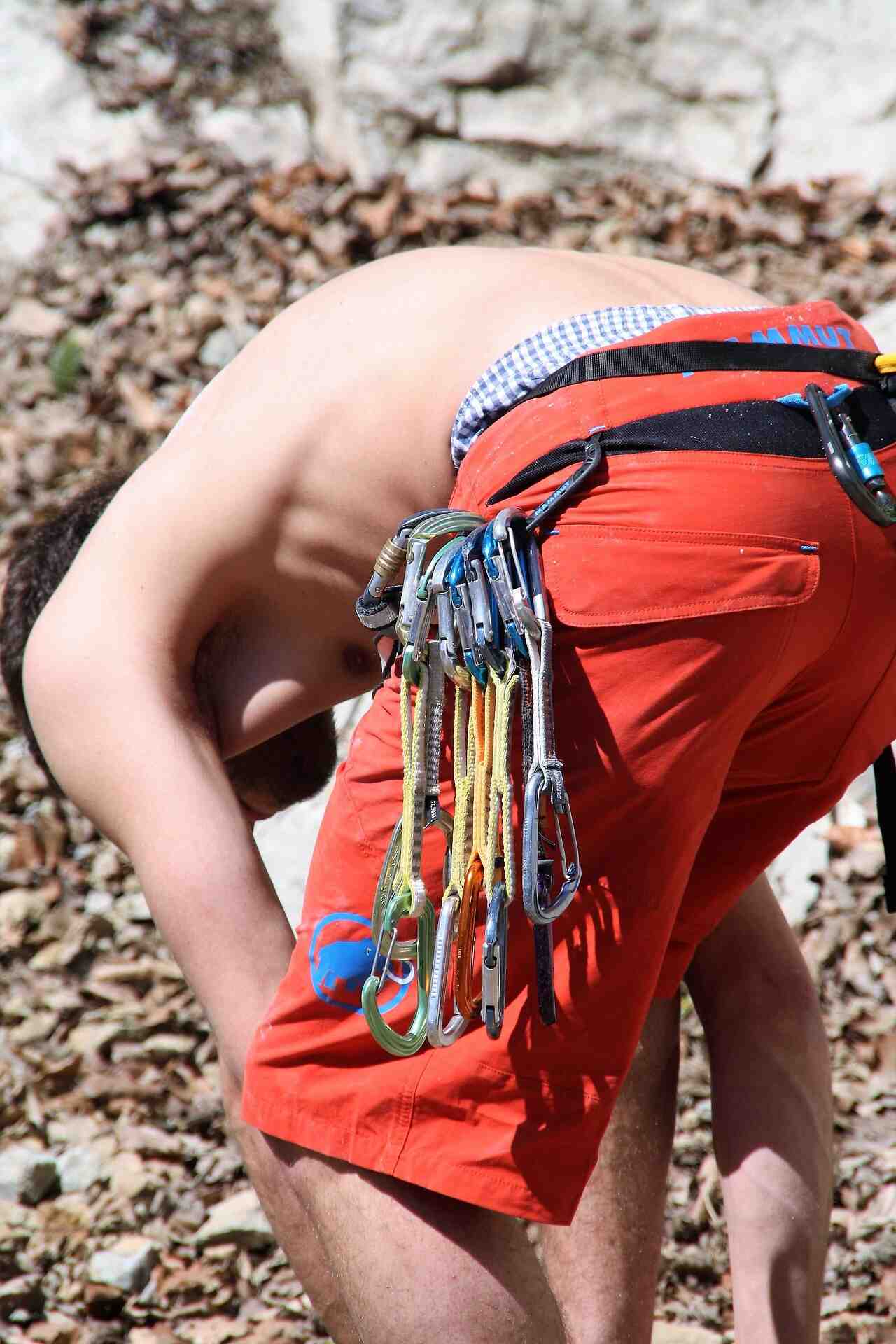Carabiners are the backbone of any climbing system, connecting ropes, anchors, and gear to keep you safe on the wall. A single misstep in choosing the wrong carabiner could compromise your safety, while the right one can make your climb smoother, safer, and more enjoyable.
Whether you’re a beginner clipping your first sport route or a seasoned trad climber building complex anchors, selecting the perfect carabiner is critical. This guide dives deep into the world of rock climbing carabiners, covering types, gate options, locking mechanisms, strength ratings, and practical tips tailored to your climbing style. With insights from industry experts, real-world examples, and safety data, you’ll gain the confidence to pick the best carabiners for your next adventure.
Types of Rock Climbing Carabiners and Their Uses
Carabiners come in various shapes, each designed for specific climbing tasks. Understanding these shapes helps you match the right carabiner to your needs, ensuring safety and efficiency.
- Oval Carabiners: These symmetrical, rounded carabiners are versatile workhorses. They’re ideal for aid climbing, racking gear, or use with belay devices like the Petzl GriGri. Their balanced load distribution prevents gear from shifting, but they’re heavier and have smaller gate openings compared to other shapes. For example, the Petzl Ovalok is a favorite for its smooth operation with belay systems. According to REI’s Expert Advice, oval carabiners excel in carabiner-brake rappels due to their shape.
- D-Shaped Carabiners: These focus loads toward the stronger spine, offering a high strength-to-weight ratio. They’re perfect for quickdraws and anchor building in trad or sport climbing. The Black Diamond Positron is a go-to for its durability. Simond notes that D-shaped carabiners are excellent for anchoring due to their uniform strength.
- Asymmetrical D (Offset D) Carabiners: These lightweight carabiners have a tapered base and larger gate opening, making them ideal for sport climbing and quickdraws. The CAMP Photon Wire, for instance, is prized for its ease of clipping. Outdoor GearLab highlights their popularity in trad climbing for weight savings.
- Pear-Shaped (HMS) Carabiners: With a wide top, these are designed for belaying with a Munter hitch or attaching multiple ropes. The Petzl Attache shines for its smooth knot-handling performance. Climbinghouse.com emphasizes their versatility for belaying and anchoring in top-rope or multi-pitch scenarios.
Choosing the right shape depends on your climbing goals. For instance, a sport climber might prioritize asymmetrical D carabiners for quickdraws, while a trad climber might mix D-shaped and oval carabiners for anchors and gear racking.
Locking or Non-Locking: Which Carabiner Is Right for You?
Carabiners are divided into locking and non-locking types, each suited to specific safety needs. Your choice depends on the task and risk level.
- Locking Carabiners: These feature screwgates, twist-locks, or auto-locks to prevent accidental opening, making them essential for high-stakes tasks like belaying, rappelling, or anchor building. They’re heavier and slower to use but offer unmatched safety. In a 2023 Yosemite multi-pitch climb, a climber’s Black Diamond RockLock TwistLock prevented a fall when a rope rubbed against the gate, as reported on climbing forums. Alpine Ascents recommends locking carabiners for any situation where an open gate could lead to system failure.
- Non-Locking Carabiners: These spring-loaded carabiners are designed for quick clipping in low-risk scenarios, such as quickdraws or racking gear. They’re lightweight and fast but can open if pressed against rock. A sport climber in Red Rock used non-locking wiregate carabiners on quickdraws for efficient clipping on a 5.11 route, showcasing their speed. Method Climbing warns that non-locking carabiners are prone to opening if misaligned, so careful placement is key.
For critical connections like anchors or belays, always opt for locking carabiners. Non-locking models are best for quickdraws or racking cams and nuts.
Straight, Bent, or Wiregate: Picking the Best Carabiner Gate
The gate type impacts a carabiner’s usability, weight, and performance in specific conditions. Here’s a breakdown of the options:
- Straight Gate: Durable and versatile, straight-gate carabiners are ideal for quickdraws, racking gear, and general use. The Petzl Djinn is a reliable choice for its smooth clipping action. REI notes their strength for various tasks.
- Bent Gate: Designed for the rope-end of quickdraws, bent gates make clipping easier, especially one-handed, in sport climbing. They’re less versatile for racking gear. Rock+Run praises their efficiency for fast-paced routes.
- Wiregate: Lightweight and resistant to freezing, wiregate carabiners are perfect for alpine and ice climbing. They also reduce gate flutter (vibration during falls that weakens strength). In a 2024 Alps climb, wiregate carabiners prevented gate freezing in subzero conditions, ensuring reliability. Outdoor GearLab highlights their larger gate openings and cold-weather performance.
- Keylock Gate: Featuring a snag-free nose, keylock carabiners prevent catching on bolts or gear, improving safety for quickdraws and anchors. The Edelrid HMS Bullet is a top pick for its smooth operation. Edelrid emphasizes their safety advantage over notched designs.
Your climbing environment dictates the best gate type. For icy alpine routes, wiregates are a must, while bent gates excel in sport climbing.
How to Read Carabiner Strength Ratings and Ensure Safety
Carabiner strength is measured in kilonewtons (kN, where 1 kN ≈ 225 lbs) across three directions:
- Major Axis (Gate Closed): Typically 20–25 kN, sufficient for most climbing loads.
- Minor Axis (Cross-Loaded): Around 7–8 kN, much weaker due to improper loading.
- Gate Open: 7–10 kN, as an open gate reduces strength by about one-third.
All climbing carabiners must meet CE (EN 12275) or UIAA standards, ensuring a minimum major axis strength of 20 kN (18 kN for ovals). The American Alpine Club’s 2022 accident report found that gear failure, including carabiners, contributed to 4% of climbing incidents, often due to cross-loading or gate-open failures. Common Climber explains that fall forces can exceed minor axis ratings, making proper orientation critical.
Always check for CE/UIAA certifications to avoid counterfeit carabiners. A 2023 study by the UIAA noted that substandard carabiners lacking certifications were a growing concern in online marketplaces, emphasizing the need to buy from reputable retailers.
Best Carabiners for Sport, Trad, Alpine, and Indoor Climbing
Your climbing style determines the carabiners you need:
- Sport Climbing: Prioritize lightweight asymmetrical D carabiners with bent gates for quickdraws (e.g., 10–12 Petzl Djinn quickdraws) and a locking HMS carabiner for belaying (e.g., Petzl Attache). These optimize speed and efficiency on bolted routes.
- Trad Climbing: Use a mix of wiregate non-locking carabiners for racking cams and nuts (e.g., 20 DMM Phantom carabiners) and locking D-shaped carabiners for anchors. A Red Rock trad climber relied on wiregates to manage a heavy rack on a multi-pitch route.
- Alpine/Ice Climbing: Choose wiregate carabiners to prevent freezing and locking HMS carabiners for belaying in harsh conditions. The Black Diamond Magnetron’s auto-locking mechanism proved reliable in the Cascades.
- Indoor Climbing: A locking pear-shaped carabiner (e.g., Black Diamond RockLock) is ideal for belaying, with non-locking carabiners for lead climbing quickdraws.
WeighMyRack suggests that sport climbers typically need 10–14 quickdraws, while trad climbers may carry 20–30 carabiners for gear-heavy routes.
Top Tips for Selecting and Maintaining Your Climbing Carabiners
To choose and care for your carabiners effectively:
- Balance Weight and Durability: Lightweight carabiners (e.g., 30g) are great for long routes but wear faster. Heavier models (e.g., 50g) offer durability for rugged use.
- Prioritize Gate Opening Size: Larger openings (e.g., 24mm on HMS carabiners) simplify clipping, especially with gloves in alpine settings.
- Use Color Coding: Anodized carabiners in colors like red and silver (e.g., Mad Rock Ultra Light Wire) distinguish rope-end and gear-end quickdraws, reducing errors.
- Maintain Regularly: Clean with warm water, lubricate gates with dry lubricant, and inspect for grooves or burrs. Retire carabiners after significant falls or visible damage.
- Test Ergonomics: Visit gear shops to handle carabiners, as comfort varies. Edelrid recommends testing gate action for smooth operation.
A 2024 survey by Climbing Magazine found that 68% of climbers neglect regular gear maintenance, increasing the risk of equipment failure. Proper care extends carabiner lifespan and ensures safety.
Avoid These Costly Carabiner Mistakes for Safer Climbing
Steer clear of these common errors:
- Using Non-Load-Bearing Carabiners: Novelty carabiners (e.g., heart-shaped) lack CE/UIAA certifications and are unsafe for climbing.
- Ignoring Cross-Loading: Improper orientation can reduce strength to 7–8 kN, risking failure. Always load along the major axis.
- Failing to Lock Screwgates: Double-check locking mechanisms before climbing. Auto-locking carabiners like the Black Diamond Magnetron minimize this risk.
- Overlooking Wear: Grooves or burrs can damage ropes, increasing fall risks. Inspect regularly.
A 2023 Reddit thread described a near-miss when a non-locking carabiner opened in a two-bolt anchor due to rock contact. Switching to a DMM Phantom Screwgate prevented further issues, highlighting the need for
Choosing the right rock climbing carabiner requires understanding shapes, gate types, locking mechanisms, and strength ratings while aligning them with your climbing style. Whether you’re clipping bolts on a sport route, building anchors in trad climbing, or braving icy alpine conditions, the right carabiner enhances safety and performance. Prioritize CE/UIAA-certified gear, test ergonomics, and maintain your carabiners to ensure reliability. By avoiding common mistakes and applying these insights, you’ll be ready for your next climb with confidence.




